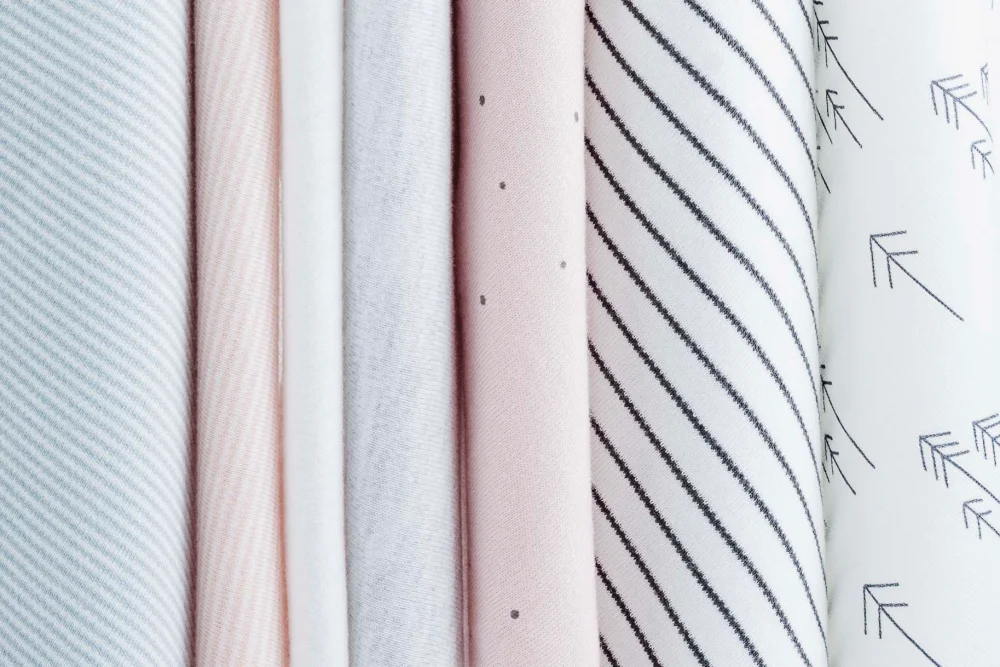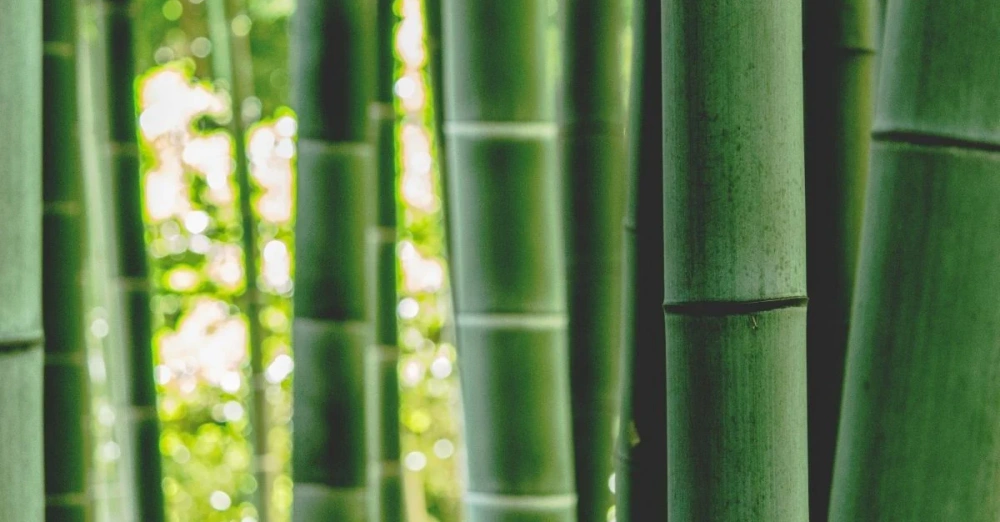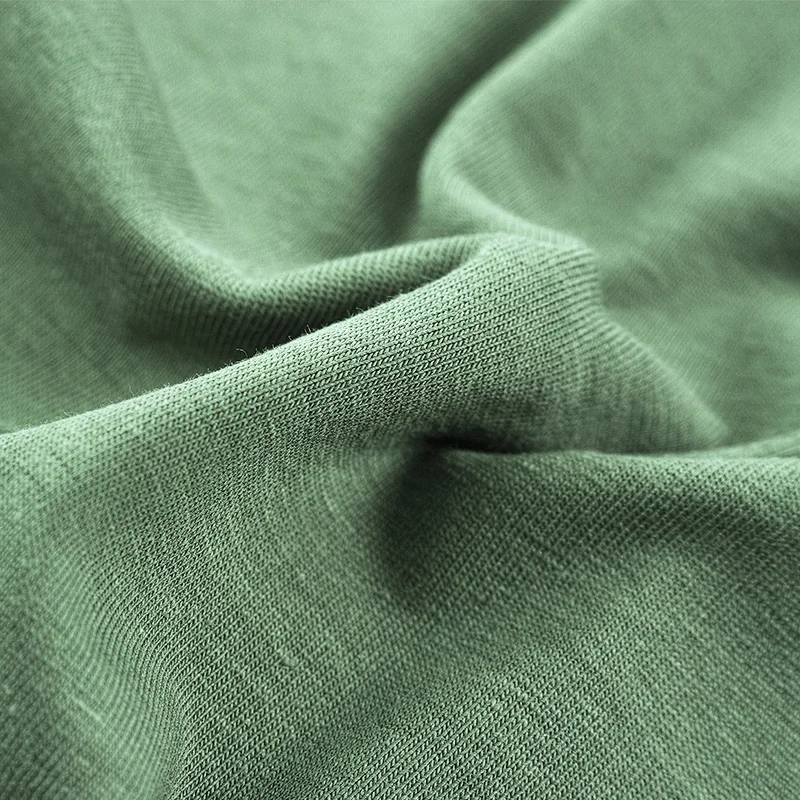When you wonder how bamboo viscose is made, you start with bamboo harvested from fast-growing, sustainable fields. The process transforms bamboo into a soft, breathable fiber using a chemical treatment that turns bamboo pulp into viscose.
This creates a fabric that feels gentle on your skin, keeps you cool in summer, and warm in winter. Over 70% of global bamboo fabric comes from this method, with China leading production. Friendtex stands out as a trusted manufacturer, always focusing on sustainable practices and top quality.
Key Takeaways
Bamboo viscose is made by turning fast-growing bamboo into soft, breathable fabric through a chemical process that recycles bamboo pulp into new fibers.
The production uses sustainable bamboo harvesting and closed-loop chemical systems to reduce environmental harm and support eco-friendly manufacturing.
Bamboo viscose fabric feels silky, wicks moisture well, resists bacteria, and keeps you cool in summer and warm in winter, making it ideal for sleepwear.
Friendtex offers high-quality bamboo viscose pajamas that are comfortable, durable, hypoallergenic, and customizable to fit your style or brand.
Caring for bamboo viscose pajamas is easy with gentle washing and air drying, helping them stay soft and last longer than cotton sleepwear.
Bamboo Viscose Overview
What is Bamboo Viscose?

You might wonder what makes bamboo viscose so special. This fabric starts with bamboo, a fast-growing grass that thrives without pesticides or much water. Manufacturers take bamboo pulp and dissolve it using safe solvents.
They then spin the solution into fibers, creating a semi-synthetic material called bamboo viscose. This process gives you a fabric that feels silky and smooth, almost like bamboo rayon. You get the best of both worlds: the natural origins of bamboo and the comfort of modern textiles.
Bamboo viscose is made from regenerated cellulose, which means the bamboo pulp gets chemically processed to form new fibers.
The result is a fabric that looks like silk, feels like cotton, and offers breathability, hypoallergenic qualities, and bacterial resistance.
The main source for bamboo viscose is Moso bamboo, mostly grown in China and Taiwan.
Bamboo Fibre and Bamboo Fabric
Bamboo fibre can come from two main processes. The first is mechanical, where the bamboo gets crushed and the fibers are combed out. This keeps the natural bamboo structure.
The second is chemical, which is how bamboo viscose is made. Here, the bamboo pulp is dissolved and then spun into new fibers. This method creates bamboo fabric with a luxurious drape and softness.
Bamboo fabric properties stand out because of the long, smooth fibers. You’ll notice that bamboo fabric resists pilling and feels gentle on your skin. It also wicks away moisture and helps regulate temperature, making it perfect for sleepwear.
Bamboo yarn, spun from these fibers, is used to create a variety of bamboo fabrics for clothing and bedding.
Friendtex Bamboo Viscose Pajamas

If you’re looking for pajamas that combine comfort and sustainability, Friendtex has you covered. Friendtex uses high-quality bamboo viscose to craft pajamas that feel soft, breathable, and gentle on sensitive skin. You can choose from a range of styles, including options for women, men, and children.
Friendtex pajamas use bamboo fabric that is naturally antibacterial and moisture-wicking, so you stay fresh all night. The company’s expertise in bamboo viscose ensures you get sleepwear that lasts, looks great, and supports eco-friendly practices.
Tip: Friendtex offers customization for bamboo viscose pajamas, so you can pick the features and designs that fit your brand or personal style.
How is Bamboo Viscose Made?
If you have ever wondered, “How is bamboo viscose made?” you are not alone. The journey from a green bamboo stalk to a silky, breathable fabric is fascinating. Let’s walk through each step together so you can see how your favorite bamboo pajamas come to life.
Bamboo Harvesting
The process starts with bamboo harvesting. You might picture tall, leafy bamboo forests. Farmers usually harvest bamboo after three to five years of growth. This timing allows the plant to mature and ensures the root system stays intact.
The roots remain in the ground, so new shoots can grow back quickly. This makes bamboo a sustainable resource.
Here’s a simple breakdown of the harvesting steps:
Farmers grow bamboo for about four years until it reaches maturity.
They cut the stalks and leaves, leaving the roots untouched for natural regeneration.
Workers crush the harvested bamboo into chips or pulp.
The pulp is soaked and prepared for the next stage.
Note: Friendtex sources bamboo from responsibly managed forests, supporting both sustainability and quality. Certifications like FSC (Forest Stewardship Council) help guarantee that the bamboo comes from well-managed, eco-friendly plantations.
Chemical Processing
Now, let’s talk about how the bamboo pulp turns into bamboo viscose. This stage uses chemicals to dissolve the bamboo fibre and extract cellulose. The main chemicals used are sodium hydroxide and carbon disulfide. These break down the bamboo pulp into a thick, viscous solution.
Sodium hydroxide helps dissolve the bamboo material.
Carbon disulfide reacts with the cellulose to create a solution that can be spun into fibers.
You might wonder about the environmental impact of this process. Traditional methods can create toxic waste and pose health risks to workers. However, many manufacturers, including Friendtex, use closed-loop systems.
These systems recycle chemicals and reduce pollution. Certifications like OEKO-TEX® STANDARD 100 and Oeko-Tex STeP show that the bamboo fabric meets strict safety and environmental standards.
Tip: When shopping for bamboo fabric, look for certifications on the label. This helps you choose products made with safer, more sustainable methods.
Fiber Regeneration
After chemical processing, the next step is fiber regeneration. Here’s where the magic happens. The viscous bamboo solution is pushed through tiny holes called spinnerets. This forms long, thin threads of regenerated cellulose, also known as bamboo rayon.
The threads enter a bath of diluted sulfuric acid, which solidifies them into fibers.
Workers wash and bleach the fibers to remove any leftover chemicals.
The clean fibers are dried and cut into threads.
These threads become bamboo yarn, which is the foundation for making bamboo fabric. The process creates smooth, soft fibers that feel gentle against your skin.
Bamboo Fabric Production
The final step is bamboo fabric production. You take the regenerated bamboo fibre and spin it into yarn. This yarn is then woven or knitted into fabric. The result is a soft, breathable, and moisture-wicking material perfect for sleepwear.
Here’s what happens during this stage:
Workers spin the bamboo yarn from the regenerated fibers.
The yarn is woven or knitted into bamboo fabric.
The fabric is dyed, finished, and cut into garments like pajamas.
Friendtex pays close attention to every detail during bamboo fabric production. The company uses advanced technology and strict quality control to ensure each piece meets high standards.
Friendtex holds certifications such as OEKO-TEX® and Amfori, showing a strong commitment to safe, sustainable, and ethical manufacturing.
Did you know? Bamboo fabric resists pilling and stays soft wash after wash. That’s why so many people love bamboo viscose pajamas for everyday comfort.
If you ever wondered how bamboo viscose is made, now you know each step—from harvesting bamboo to spinning it into luxurious bamboo fabric. This process combines nature, science, and careful craftsmanship to create products you can feel good about wearing.
Environmental Impact
Sustainability of Bamboo

You might wonder why bamboo is often called a sustainable resource. Bamboo grows incredibly fast, sometimes up to three feet a day. It thrives with little water and doesn’t need pesticides or fertilizers. When you harvest bamboo, you don’t kill the plant. The roots stay in the ground, so new shoots grow back quickly.
This makes bamboo a great choice for eco-friendly manufacturing. Compared to cotton, bamboo uses much less water and land. Cotton farming often needs lots of water and chemicals, while bamboo can grow on poor soils and still flourish.
These qualities help reduce the environmental impact of bamboo fabric and support long-term sustainability.
Chemical Use in Bamboo Viscose
While bamboo itself is sustainable, the process of turning it into bamboo viscose involves chemicals. Manufacturers use substances like sodium hydroxide, carbon disulfide, and sulfuric acid to break down bamboo pulp. These chemicals can harm the environment and human health if not managed properly.
Producing one ton of viscose can use up to 30 tons of water and release harmful emissions. Carbon disulfide, in particular, is a major pollutant. The environmental impact of bamboo fabric comes mostly from this chemical-intensive process.
Some companies now use closed-loop systems to recycle chemicals and reduce pollution, but the process still raises concerns.
Note: Choosing responsibly manufactured bamboo fabric helps lower the environmental impact and supports safer production methods.
Certifications and Friendtex Commitment
You want to know your bamboo pajamas come from a trustworthy source. That’s where certifications matter. The Forest Stewardship Council (FSC) ensures bamboo comes from responsibly managed forests. OEKO-TEX and GOTS certifications show that bamboo fabric is safe for your skin and made with eco-friendly practices.
Friendtex holds these certifications and more, proving their commitment to sustainability and ethical production. Friendtex uses advanced technology and strict quality control to make sure every piece meets high standards for eco-friendly manufacturing.
When you choose Friendtex, you support a brand that values both quality and the environment.
Benefits of Bamboo Viscose
Softness and Breathability
When you slip into bamboo viscose pajamas, you notice the difference right away. The fabric feels silky and smooth against your skin. Scientific studies show that bamboo fibers have a round, smooth structure with tiny gaps.
These gaps let air flow through the bamboo fabric, making it about 20% more breathable than cotton. You stay cool and comfortable, even on warm nights. Bamboo viscose absorbs 60% more moisture and holds three times its weight in water compared to cotton.
This means sweat evaporates faster, and your body temperature stays about 2-3°C cooler. You get a fresh, dry feeling all night.
Hypoallergenic and Antibacterial
If you have sensitive skin, bamboo viscose is a smart choice. The natural properties of bamboo help keep bacteria away. The fabric resists odors and stays fresh longer.
You don’t have to worry about irritation or allergies. Bamboo fabric is gentle and soft, so it won’t scratch or rub your skin. You can wear clean bamboo viscose clothing with confidence, knowing it helps protect your skin and keeps you feeling good.
Friendtex Bamboo Pajamas Features
Friendtex designs bamboo pajamas with your comfort in mind. You get pajamas that are soft, breathable, and moisture-wicking. The fabric keeps you cool in summer and warm in winter.
Friendtex offers styles for women, men, and kids. You can customize your pajamas with buttons, zippers, lace trims, or satin ribbons. The bamboo fabric resists pilling and keeps its color after many washes. You enjoy pajamas that last and look great.
Tip: Friendtex pajamas are easy to care for. Just wash them gently, and they stay soft and fresh.
Bamboo Viscose vs Cotton
Let’s compare bamboo viscose and cotton. Bamboo viscose feels softer and is more breathable than cotton. You get better moisture management, so you stay dry and comfortable. Cotton absorbs moisture but doesn’t wick it away as well.
Bamboo fabric helps regulate your body temperature, keeping you cool when it’s hot and warm when it’s cold. Here’s a quick look at how bamboo viscose stacks up against other fabrics:
Fabric | Moisture-Wicking Ability | Breathability | Notes |
|---|---|---|---|
Bamboo Viscose | Excellent; keeps skin dry | Highly breathable | Great for night sweats and warm climates |
Modal | Good; helps evaporate moisture | Exceptionally breathable | Slightly less breathable than bamboo |
Cotton | Absorbent; less effective at wicking | Breathable but less efficient | Less effective in moisture management |
You get more comfort and freshness with bamboo viscose, especially in sleepwear. Friendtex bamboo pajamas combine all these benefits, giving you a better night’s sleep.
Care and Use Tips
Caring for Bamboo Viscose Pajamas
You want your bamboo pajamas to stay soft and last for years. Good news—caring for them is easy if you follow a few simple steps. Here’s how you can keep your sleepwear looking and feeling great:
Wash your pajamas in cold water using a gentle cycle.
Choose a mild, fragrance-free detergent. Skip bleach and fabric softeners since they can damage the fibers.
Turn your pajamas inside out before washing. This helps prevent pilling and keeps colors bright.
Wash with similar colors and soft fabrics to avoid abrasion.
Air dry your pajamas on a rack or padded hanger. This keeps their shape and prevents shrinking.
Keep them out of direct sunlight while drying to protect the color.
Reshape gently before drying to maintain softness.
If you use a dryer, select low heat and remove your pajamas while they’re still slightly damp.
When you care for your bamboo sleepwear this way, you help it last for many years. Many people say their bamboo pajamas feel great even after five years of use. You’ll notice they resist shrinking and fading better than cotton.
Tip: Always check the care label for extra instructions. Gentle care means longer-lasting comfort!
Identifying Quality Bamboo Fabric
Not all bamboo sleepwear is created equal. You can spot high-quality bamboo fabric by looking for these signs:
Silky softness from smooth, round fibers.
Superior breathability that keeps you cool and comfortable.
Moisture-wicking properties to pull sweat away from your skin.
Hypoallergenic features, perfect for sensitive skin.
Durability that maintains softness and shape over time.
Subtle sheen and gentle drape for a luxurious look.
Low pilling, so your pajamas stay smooth.
Good dye acceptance, giving vibrant colors.
Eco-friendly sourcing and responsible processing.
If your pajamas check these boxes, you know you’ve got a premium product.
Friendtex Product Customization
Want pajamas that match your style or brand? Friendtex offers plenty of customization options. You can choose special features, colors, and branding to make your sleepwear unique.
Customization Option | Details | Product Types Covered |
|---|---|---|
Custom branding | Add your logo or label | Pajamas, robes, underwear |
Embroidery | Personalize with names or designs | Pajamas, robes |
Special features | Cooling fabric, extra pockets, trims | Pajamas, activewear |
You get to design pajamas that fit your needs, whether you want something classic or bold. Friendtex helps you create sleepwear that stands out and feels just right.
Note: Customization lets you express your personality or build your brand with every piece.
Conclusion
You’ve seen how bamboo transforms from a fast-growing plant into soft, eco-friendly sleepwear through careful steps like sustainable harvesting, closed-loop processing, and quality checks.
Friendtex leads the way by using advanced, responsible methods and holding top certifications. When you choose bamboo pajamas, you get comfort, breathability, and peace of mind knowing you support a brand that values both you and the planet.
FAQ
What makes bamboo viscose pajamas different from cotton pajamas?
You’ll notice that bamboo viscose pajamas feel softer and cooler than cotton. They wick away moisture better and help regulate your body temperature. If you have sensitive skin, bamboo viscose is gentle and less likely to irritate.
How do I wash bamboo viscose pajamas to keep them soft?
You should wash your pajamas in cold water on a gentle cycle. Use mild detergent and avoid bleach or fabric softeners. Air dry or tumble dry on low heat. This keeps your pajamas soft and looking new.
Are Friendtex bamboo viscose pajamas safe for sensitive skin?
Yes! Friendtex bamboo viscose pajamas are naturally hypoallergenic and antibacterial. You can wear them if you have allergies or sensitive skin. The fabric feels smooth and gentle, so you stay comfortable all night.
Is bamboo viscose fabric eco-friendly?
Bamboo grows quickly and needs little water or chemicals. Friendtex uses responsible sourcing and advanced processing to reduce environmental impact. Look for certifications like OEKO-TEX® and FSC to make sure your pajamas are truly eco-friendly.


